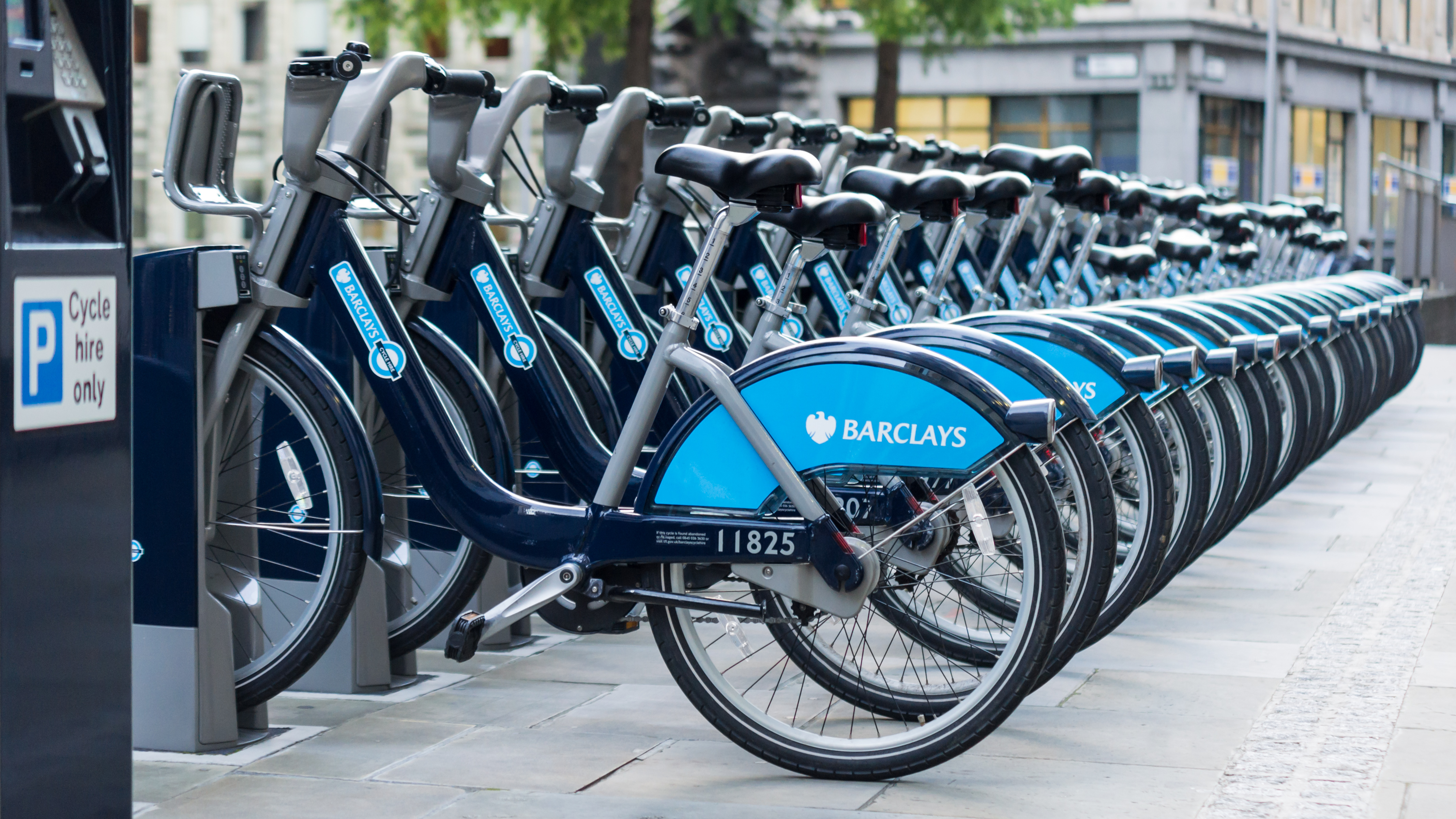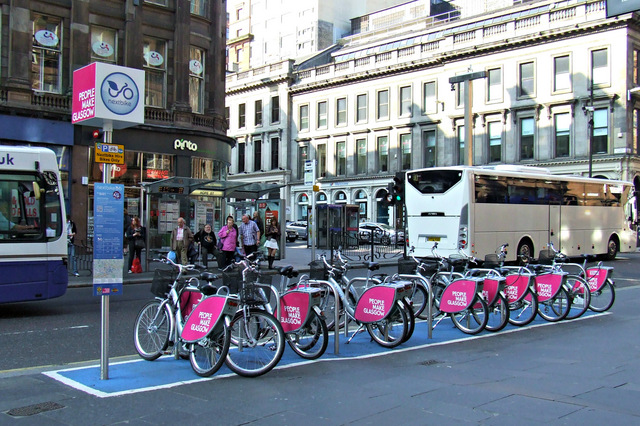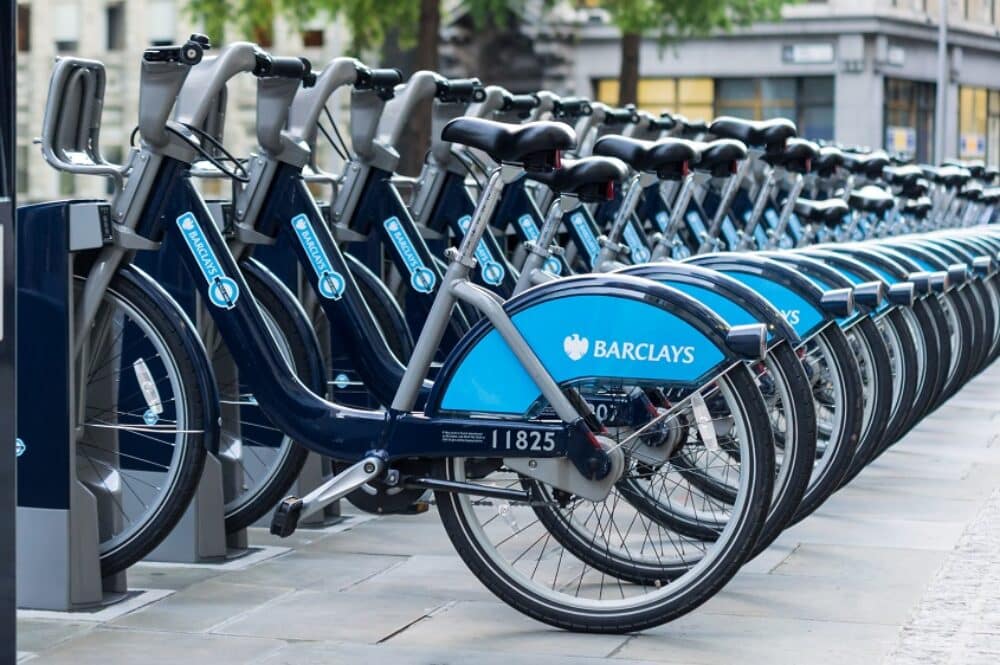This post may contain affiliate links, which help to keep Discerning Cyclist rolling. Learn more.

Remember buying things? Remember actually parting with your money to take full ownership of a possession? Ask anyone younger than about 25 and they probably won’t.
We are now living in the so-called millennial age of ‘Generation Rent’, where more and more things – music, clothes, cars and more – are not bought, but rather borrowed.
Bikes, it seems, are heading the same way too, with shared bike schemes becoming an increasingly popular worldwide phenomenon. But just how and why is it now becoming fashionable to be lent a pair of wheels instead of investing in your own?
Different Schemes of Bike Hire
Enter almost any city in the UK and you’re bound to find it has its own bike hire service.
Most notable, of course, is London, with the Santander Cycles services, otherwise known as ‘Boris Bikes’, has grown in popularity almost constantly since its launch in July 2010. More than 73.5 million journeys have been made with them, with 73,000 the record for hires in a single day.
And now, they have extra competition in the form of Uber’s JUMP Bikes, launched in London in the summer of 2019 initially as a trial-run of 350 red electric bikes in Islington, having already prospered in the US, Canada and five other European cities.
They’re far from alone, either. Oxford, for instance, is one of Britain’s most popular cycling destinations, and has its own variety of dockless bike hire services, while another hotspot for cyclists, Edinburgh, launched Just Eat Cycles in September 2018.
There’s also Brompton Bike Hire, a folding bike rental service operating in 38 different regions of the UK, including Birmingham, Portsmouth, London and Manchester.
The latter of these also hopes to launch its own version of the capital’s ‘Boris Bikes’ scheme, with hundreds of millions of pounds already pledged to making Manchester one of the most cycling-friendly cities in Britain.
And worldwide, there are well in excess of 1,000 bike hire schemes operating in more than 50 countries, dominated by China, who account for 11 of the world’s biggest 15 systems.
Leading the way is Hangzhou Public Bicycle which, launched in October 2008, now boasts almost 3,000 stations and about 80,000 bikes. Funded by the city of Hangzhou itself, it has done wonders in terms of easing congestion and making it a more environmentally-friendly region of China.
In Europe, no country had a larger scheme than the Netherlands with OV-fiets and its 15,000 bicycles operating all over arguably the most cycling-friendly nation on the continent, though Paris and London are not far behind them with their own systems, too.
Why Hire a Bike?

Well, as you’ll have probably gathered at this point in the article, bike hire services are practically everywhere nowadays, for a start. It shouldn’t matter where you find yourself, there will almost certainly be somewhere for you to rent your own pair of wheels for an hour, an afternoon, a day, or even longer.
And, of course, more people riding a bike means fewer people in a car, so they also carry all the old health, economical and environmental advantages – cycling obviously keeps you in better shape than driving; pedestrians are more likely to stop and browse the shops than drivers; and fewer cars means less congestion on the roads and fewer carbon emissions. Just look at the positive impacts it’s had on Hangzhou from this perspective, for instance.
But their incredible ease of access is another key selling point; many of these bike-sharing brands have their own GPS-enabled mobile applications from which you can hire one of their models. So, without even having to enter a shop, you can order one with a few taps on your phone within seconds.
And if you’re a keen cyclist but perhaps cannot justify spending hundreds or even thousands of pounds on your own bike, then this offers a healthy, cost-effective solution. Not only do bike hire services work on ad-hoc basis, but they’re also extremely affordable; you will struggle to find a scheme charging more than £10 for an hour’s cycling, for example.
Any Drawbacks?
Bike hiring services aren’t perfect, though, and under-usage can be a problem in some quarters. For instance, according to CityMetric, while their global usage rates can vary between three and eight trips per bicycle per day, some facilitate just 0.3 journeys per bike on a daily basis.
Aside from that, some schemes are guilty of being slow to expand, or causing political friction if local authorities refuse to give up parking spaces for bike stations.
Meanwhile, in both Melbourne and Brisbane, helmets – which are compulsory – have put off many potential cyclists; safety concerns and inadequate cycling infrastructure have also hindered progress.
And though they have become almost synonymous with China, it’s not all been good news. In 2018, it was reported that millions of dockless bikes had disappeared during the previous two years, in what was described as a ‘green revolution’ and a ‘social menace’.

Some believe this the downfall of being able to pick up and park your rented bike using a GPS-enabled app – bikes can be abandoned in cycle lanes or pavements or, as one case revealed, dumped in an icy river.
So, Are Hired Bikes The Future Of Cycling?
Well, you could argue they’ve already become the present, let alone the future. Despite encountering these pitfalls, they are generally outweighed by the number of advantages to bike sharing schemes are.
With hired bikes offering a cheaper, more environmentally-friendly and easier way to exercise than purchasing your own bicycle, and with the technology spearheading their progress only improving, it is difficult to see how bike owners can compete, at least in the long-term.












